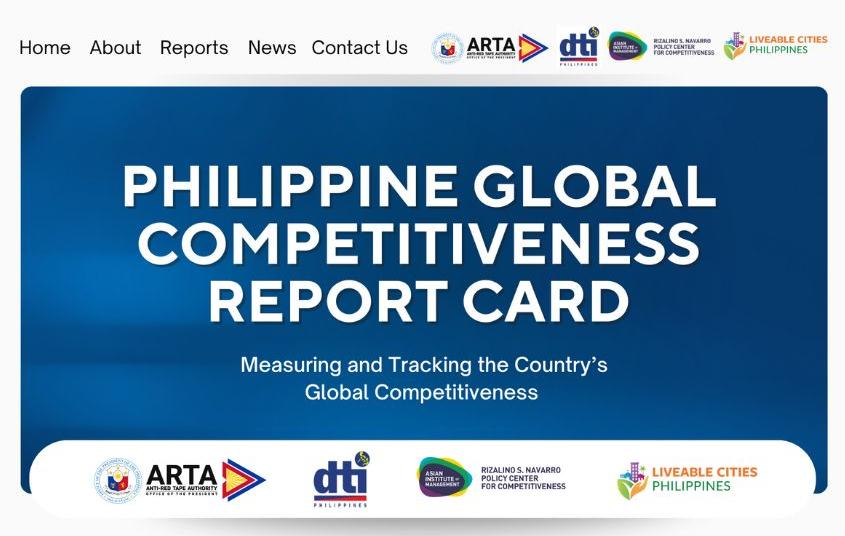
Liveable Cities Philippines is pleased to announce that it has joined hands with the Anti-Red Tape Authority (ARTA), Department of Trade and Industry (DTI), and the Asian Institute of Management’s Rizalino S. Navarro Policy Center for Competitiveness to launch the Philippine Global Competitiveness Report Card. The Report Card was launched on May 24, 2024, on the occasion of the 6th anniversary of ARTA. This groundbreaking initiative is a platform designed to monitor and analyze the country's global competitiveness. It contains 20 global reports that encompass seven key categories: General Competitiveness; Digital; Education, Talent and Innovation; Energy and Environment; Governance; Health and Nutrition; and Trade. This comprehensive approach aims to provide essential data and performance metrics that will help in strategic planning, policy formulation, and initiative implementation across both public and private sectors to enhance the Philippines' overall competitiveness.
Building local competitiveness is essential in boosting long-term national competitiveness. Cities are the primary movers of economic growth and innovation. They are hubs of consumption, resource use, and waste. They are also as generators of wealth, production, and development. However, in this increasingly urban world, today’s cities are facing new challenges. They have become the center of society’s most pressing economic, social, and environmental issues. They face issues on disaster preparedness, traffic congestion, lack of mobility and logistics options, delivery of public goods and services, and low global competitiveness.
For these reasons, we need to plan them better. The Philippines, which is a nation of islands, needs to establish multiple economic hubs—the cities—spread throughout the regions so that we can disperse inclusive growth, opportunities, and development.
The Philippines has had a spotty record of urban planning. What started out as beautifully master-planned cities generations ago have ended up as cities characterized by congestion and traffic, little or poor access to mass transit, few open spaces, parks, and public spaces, and many blighted and derelict sections. And yet we’ve also seen some areas beautifully-planned and built out in different parts of the country. Whether by design or accident, the parts that have become “liveable” are thriving, booming, and driving growth.
Great cities are not built overnight. But we can get started. Through the Liveable Cities Design Challenge, we help mayors and key local officials develop comprehensive, replicable, and implementable solutions to improve the liveability of their cities, while strengthening local communities in the process. The Challenge’s vision is an accelerated trend towards designing, building, and developing competitive, sustainable, and resilient Philippine cities.






In order for cities to improve, they must be able to measure themselves. With this in mind, we created the Liveable Cities Dashboard. The dashboard tracks and consolidates city data from multiple sources and visually displays data to show insights, trends, and performance of a city.
Through the Liveable Cities Dashboard Local chief executives can now better assess their city and identify areas for improvement. For citizens and the private sector, it serves as a guide on where to locate and identify innovative ways of using public data to engage with their locality.
Through open data, the Liveable Cities Dashboard sets the groundwork in promoting transparency in local governments.